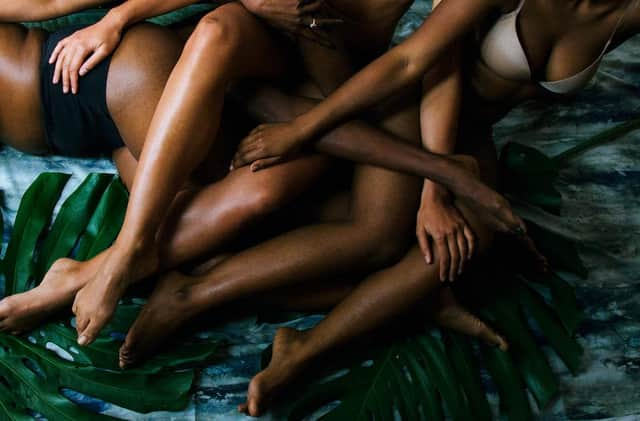Festival review: Fringe of Colour


When life came to a collective standstill in 2020, the creative industries across the globe felt tremors that lasted longer than anyone could have anticipated. For the largest arts festival in the world, this meant a forced pause in activity as organisations, companies and venues had to rethink any pre-existing summer festival plans. Fringe of Colour, the initiative founded in 2018 by Jessica Brough, was due to return at full capacity as part of the Edinburgh Festival Fringe but the lingering threat of COVID compelled the team to quickly switch gears. And so from the chaos, a new online arts festival and publishing platform was born, taking the place of a physical, in-person event.
Fringe of Colour Films presented over 40 films made by Black and Brown people/people of colour, which were streamed online throughout August 2020 alongside essays by writers responding to the work. While the Edinburgh Fringe is back this year in a much smaller capacity, streaming continues to be a core element of many programmes as we adjust to changing restrictions. So with this in mind, Fringe of Colour Films returns with another high-quality selection of 23 unique films which are available to stream over a two-week period until 15 August.
The success of the 2020 festival came not only from the quality of work on offer, but the way in which the team addressed engagement, ensuring that the experience didn’t merely involve the streaming of online content but full interconnection with conversations of note too. The 2021 programme builds on this focus, as well as last year’s expertly curated works, with varying genres that have been submitted by filmmakers from countries including Scotland, Nigeria, Iceland, Belgium and Egypt.
During week one of the festival, each of the films on offer responds to the themes of ‘Rituals’ or ‘Flight’, followed by ‘Protest’ and ‘Self’ in week two. The effect of placing these themes at the centre is that there is a deeper and more profound exploration of subject matters that shape the lives of people of colour in communities all over the world, from identity and migration to legacy and resistance. Not only is there a feeling of education in sitting down with each of the four strands, there is a reminder in the range of voices and experiences that exist, often too weighty to fit under the simple banner of ‘diverse’ or ‘underrepresented’.
Films like Jessica Lauren Elizabeth Taylor’s Muttererde, which features the stories of five Black femmes, are an excellent example of this, as the audience is introduced to the lives of five very different people of the African diaspora. But the uniting factor is their interrogation of the knowledge that is passed down from mothers, grandmothers, great grandmothers and so on, and their questioning of how this intersects with who they are today in everything from motherhood to queerness.
The past and the present converge in other films in the programme, such as in Fatima Kried’s beautifully haunting animation Yuluu, which follows the account of a young woman stranded in Beirut during the 2006 Lebanon War. Kried’s piece is short but impactful in its disconcerting framework, in which images appear and dissipate as quickly and unsettlingly as the conflict itself.
Another highlight is On the Surface; also an animation but this time with Iceland as its setting. Fan Sissoko’s striking images show a Black woman swimming in the cold, Icelandic sea, as the narration reflects on the trauma of her pregnancy and the healing and strength that she draws from the wild. Elsewhere, Hypnagogia Glossolalia is a film composed of spoken word written and narrated by Sekai Machache, with Gaelic narration by Cass Ejeki, Shona (zezuru dialect) narration by Gillian F. Mutanga and breathtaking choreography and dance by Divine Tasinda. In this piece, the arresting combination of different languages, minimalist soundscapes and pronounced movement conjure emotions of resentment and anger, but also of hope.
Aside from the submitted films, three Scotland-based Black queer artitsts – Thulani Rachia, Gillian Katungi and Mae Diansangu – have been commissioned to create work for the 2021 festival. These three films will be available to watch from 8 August, along with eight other pieces that make up week two’s programme. These include Selkie, a new piece by Niall Moorjani that uses visual and oral storytelling to look at issues of identity;
Ramaya Tegegne’s theatrical docu-fiction Framer Framed; and Corinne Walker’s comedy short Clifford, inspired by classic 1990s sitcoms.
While the overall Fringe of Colour Films programme is worth tuning into for its celebration of Black and POC talent alone, it also stands out for its emphasis on accessibility, even in its status as a relatively new digital festival. All of the films in the 2021 programme have English captions or subtitles, Audio Descriptions and British Sign Language interpretations, and the ticket price, which starts at £5 for the full two weeks, ensures that as many people as possible are able to get involved. This fits neatly with Fringe of Colour’s mission statement from its early days; to provide people of colour with free tickets to attend shows by performers of colour at the Fringe and beyond.
There has long been criticism of the Edinburgh Festivals for issues surrounding diversity and inclusivity, but initiatives like Fringe of Colour have catalysed a sea-change in conversations as well as progress since its inception. Though the effects of the pandemic have threatened to decelerate this widespread progress, the launch of Fringe of Colour Films last year and the successful continuation of the festival in 2021 proves that positive shifts in our cultural landscape remain both possible and viable.
Fringe of Colour runs until 15 August at www.fringeofcolour.co.uk
A message from the Editor:
Thank you for reading this article. We're more reliant on your support than ever as the shift in consumer habits brought about by coronavirus impacts our advertisers. If you haven't already, please consider supporting our trusted, fact-checked journalism by taking out a digital subscription at https://www.scotsman.com/subscriptions